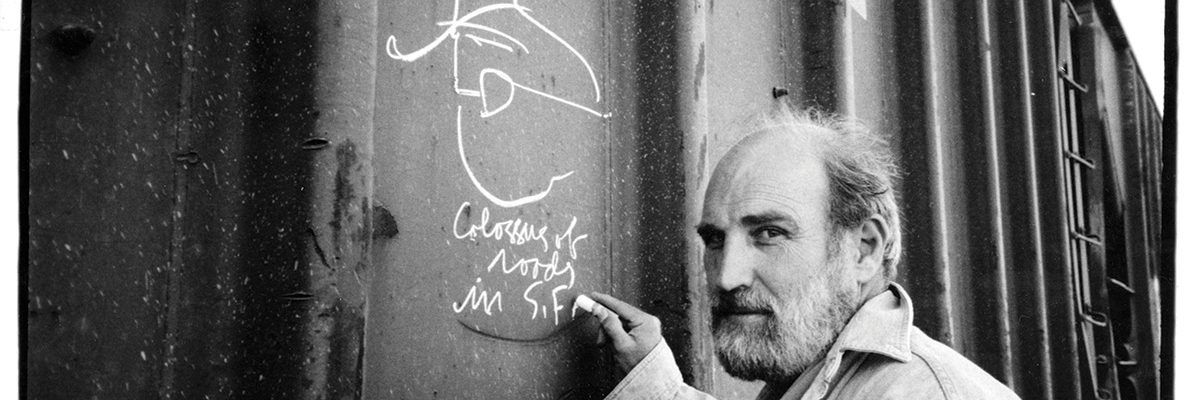They/Them
2023 - Film & Video (Film & Video)
9:40 minutes
Juan Obando
They/Them by Juan Obando is a video essay and deepfake that uses Adobe Stock clips, maintaining their branded watermark, but animating the scenes underneath with a narrative of self-critical awareness. It’s a meta-narrative that uses the staged scenarios (as evidence) to talk about the variable politics (and mercenary capitalism) of the stock footage industry and the misinformation dilemma we’re facing with the arrival of AI technology. In a surprising reversal, a deepfake is used to tell the truth. Using voice-cloning scripts to cast a variety of voice-types (most borrow the voices of well-known actors) Obando’s racially diverse characters articulate a critical monologue, one written by the artist but projected onto pan-international identities. The characters speak directly about their nature as stock videos, reflecting on their condition and influence. Stock footage is created by media companies and independent videographers worldwide and distributed by a small group of stock banks (aggregators). In most cases, their use is commercial—appearing in advertising campaigns for example. But in a troubling twist, more recently they’ve also been used in documentaries and other non-fiction programs, even the news. In the context of this phenomenon, Obando’s project asks: do we make our media, or does our media make us? A growing subset of stock footage featuring protests has appeared within the biggest stock data bank in the world, Adobe Stock. Scenes depicting social unrest in the US are mainly produced abroad, from Milan, Ukraine, Latvia and Spain (among others). Only one of the clips in Obando’s video is actually shot in the US. Stock video creators have recognized a demand for this footage category, and have set out to meet that demand. Accordingly, these creators invest in professional actors, props, and locations that replicate—and potentially amplify—US-specific conflicts from the past few years. Political causes such as #blacklivesmatter, #defundthepolice, and #notmypresident appear in these staged videos. The implication here is that nothing is sacred, even committed positions worth of public protests are subject to absorption by global capital, and for the citizens of the US, it comes as no surprise.
As a Colombian who studied and now lives in Arizona, Juan Obando has a non-native perspective on the media-obsessed culture of the US. His projects critically intervene in social systems, often addressing key issues of the moment. In recent years, he’s explored digital objects and screen-based installations—recognizing the screen as a site where ideology confronts aesthetics and new worlds are imagined and formed through speculative technologies.
Colors:
Related works sharing similar palette

© » KADIST
Eileen Quinlan
2016Eileen Quinlan’s abstracted images, like Swipe , rely on the manipulation of photographic materials inside the studio itself, and reject the exterior world for complex interrogations of the medium....

© » BROOKLYN STREET ART
buZ Blurr, One Telling of the “Origin Story” at Straat Museum Amsterdam | Brooklyn Street Art BROOKLYN STREET ART LOVES YOU MORE EVERY DAY In the shifting culturescapes of urban contemporary art, STRAAT Museum’s latest exhibition, “Moniker: An Origin Story,” emerges as a poignant narrative that bridges the transient heritage of hobo monikers with the vibrant pulse of today’s street art scene...

© » KADIST
Carole Douillard & Babette Mangolte
2018Following Bruce Nauman’s seminal performance Walking in an Exaggerated Manner Around the Perimeter of a Square (1967) – which sees the artist carefully trace a small delimited area of his studio exaggerating the movements of his hips as he places one foot in front of the other – Idir reproduces these performative gestures in Algiers, Algeria...

© » ARTS EQUATOR
ArtsEquator's Top 10 Picks at the Performing Arts Meeting 2019 | ArtsEquator Thinking and Talking about Arts and Culture in Southeast Asia Articles José Maceda, Cassettes 100, 1971, Photo by Nathaniel Gutierrez, Courtesy of UP Center for Ethnomusicology and Ringo Bunoan January 10, 2019 Established in 1995, the Tokyo Performing Arts Market (TPAM) was created to be a platform to network Japanese artists with producers and funders...

© » KADIST
Pratchaya Phinthong
Phinthong made four photographs depicting fragments of meteorites of which the faces have been polished to reflect the sky...

© » KADIST
Natsuko Uchino
2020Squid Currency is a series of 13 non-calibrated double-sided tin coins made using a casting technique dating back to Neolithic times where cuttlebones (squid bones) were carved by hand and then used as a mold...

© » KADIST
Asli Çavusoglu is in residence at KADIST Paris from February to May 2020 to develop a project based on previous research she conducted on colors, extending her interest for their political histories towards the production of fabrics colored by naturally cultivated and fairly distributed vegetables, fruits and other edible plants...

© » KADIST
Roman Ondak
2003As the caption purposely admits, these drawings were made by friends of Ondák’s at home in Slovakia asked to interpret places he has journeyed to...

© » KADIST
Mary Reid Kelley
2015Kelley’s 2015 portrait of the poet Charles Baudelaire is one of a series of poets, rappers, and other thinkers who have influenced the artist’s ideas about beauty, creativity, and expression...

© » KADIST
Olga Grotova
2022Our Grandmothers’ Gardens by Olga Grotova is based on the history of Soviet allotment gardens, which were small plots of land distributed amongst the families of factory workers to compensate for poor food supply in a country that was over-producing weapons...










